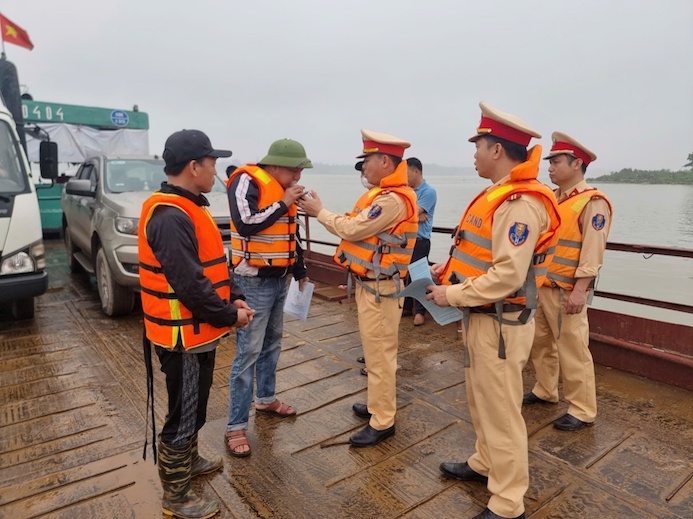The rainy and stormy season is entering its peak, posing many potential safety risks to inland waterway traffic in Hung Yen province. In addition to the strict inspection and control of the authorities, people's awareness of complying with regulations and raising vigilance when participating in traffic on the river is extremely necessary.
Currently, Hung Yen manages 5 national inland waterways with a total length of more than 360 km, along with about 250 km of local inland waterways and nearly 100 ferry terminals and ferry terminals carrying passengers across the river. During the rainy and stormy season, river water levels rise, strong currents and limited visibility make it difficult to operate vehicles. In particular, many vehicles are still old, lacking necessary safety equipment, increasing the risk of accidents, especially at ferry terminals and ferry terminals.
In this situation, the Traffic Police Department of Hung Yen province has proactively increased propaganda, reminded vehicle owners, train drivers and traffic participants to strictly comply with legal regulations.

Measures such as vehicle registration, inspection, ensuring transportation business conditions and adequate equipment for life are strictly inspected. The force also requested to stop operations and anchor safely when the weather is bad, absolutely do not travel in poor visibility or strong flow conditions to limit accidents.
At Thai Phu ferry terminal, Vu Tien commune, where thousands of people and vehicles pass by every day, including many students - a vulnerable group, the local government closely coordinates with the authorities to inspect the operations at the terminal. Vehicle owners are required to strictly comply with regulations, not to overload, not to use vehicles that have expired and are fully equipped with life-saving equipment to ensure maximum safety for passengers.
In parallel with propaganda, the traffic police force has increased patrols and controls on key rivers such as the Red River, Luoc River, and Tra Ly River to detect and strictly handle violations. The inspection contents focus on vehicle registration and inspection; professional certificates of drivers; life-saving equipment, fire prevention and fighting equipment; as well as compliance with loads, water lines and documents related to the origin of goods.










